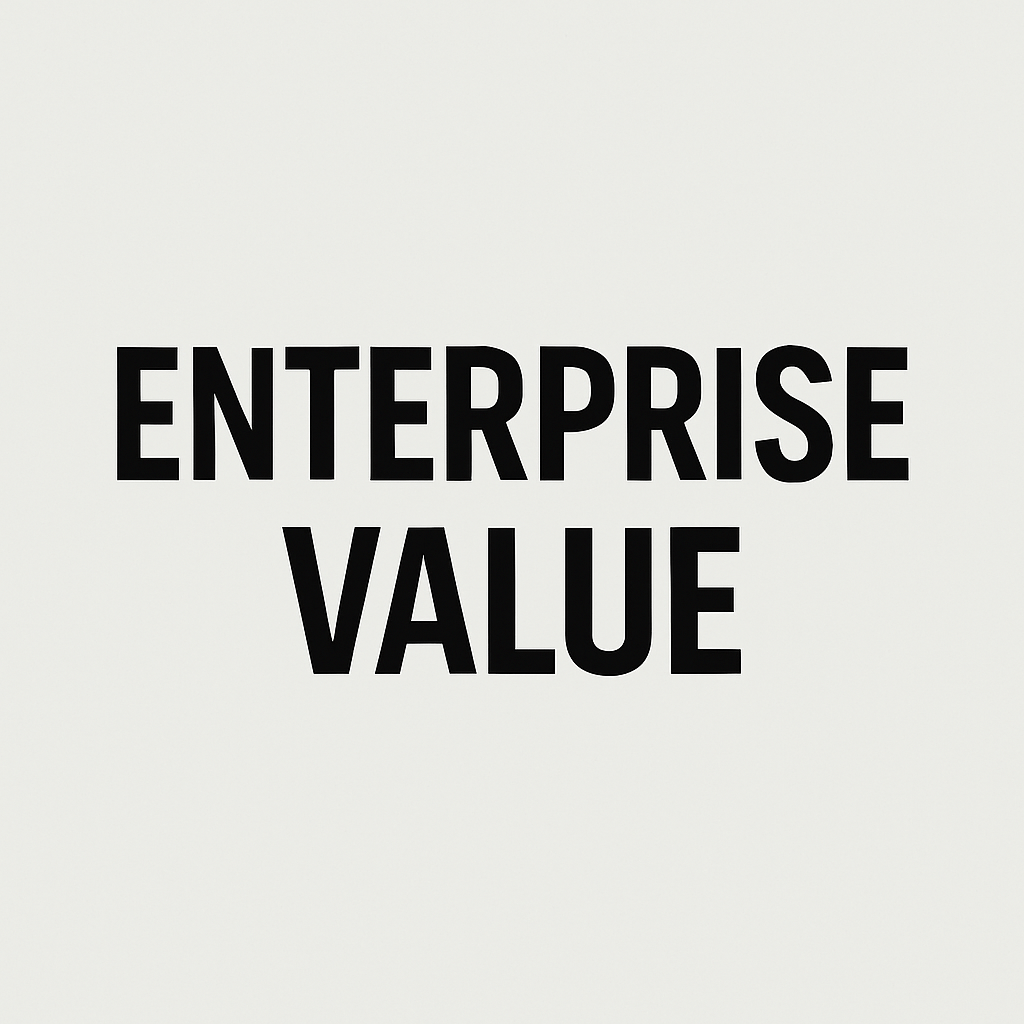Your cart is currently empty!
Understanding enterprise value

Enterprise value offers a comprehensive measure of a company’s total value. Unlike market capitalization, which reflects only the equity value, enterprise value adds debt and subtracts cash to present a clearer picture. By calculating enterprise value, investors and analysts gauge how much it would cost to acquire a business outright. This metric proves vital when comparing firms across industries and geographies, whether in the US, UK, Italy, or broader Europe.
Calculating enterprise value
To compute enterprise value, start with market capitalization. Then add total debt, minority interests, and preferred equity. Finally, subtract cash and cash equivalents. This formula ensures that you account for both financial obligations and available liquidity. As a result, enterprise value delivers an “all‐in” figure that informs valuations in mergers, acquisitions, and investment analysis. Transitioning from equity value to enterprise value provides deeper insights into a company’s capital structure and operating performance.
Enterprise value versus market capitalization
While market capitalization signals how the market values a company’s equity, it overlooks debt levels and cash reserves. Consequently, two companies with identical market caps may present very different takeover costs if one carries substantial debt. Enterprise value corrects this imbalance. Therefore, when you compare peer companies, you rely on enterprise value to identify true relative worth. This approach helps you avoid misleading conclusions based solely on share price and outstanding shares.
Why enterprise value matters to investors
Investors prioritize enterprise value because it offers an unvarnished view of what acquiring a company truly entails. By incorporating debt, enterprise value ensures that leveraged firms do not appear undervalued. Moreover, subtracting cash recognizes readily available resources that an acquirer could deploy post‐transaction. As a result, enterprise value fuels metrics like EV/EBITDA, which you use to compare profitability multiples. Hence, skilled investors lean on enterprise value to uncover both bargains and overvalued targets.
Interpreting enterprise value in global markets
In global markets, enterprise value carries universal appeal. Whether you follow US indices on our Dow Jones Industrial Live feed or track European benchmarks, enterprise value standards remain consistent. This uniformity helps you compare an industrial powerhouse in Italy with a tech giant in Silicon Valley. Transitioning seamlessly between markets, you apply the same enterprise value lens to companies listed on the FTSE, DAX, Borsa Italiana, or NYSE.
Role of debt and cash in enterprise value
Debt and cash adjustments distinguish enterprise value from simplistic valuations. High debt inflates enterprise value, signaling greater acquisition risk. Conversely, substantial cash reserves reduce enterprise value, indicating additional cushion for investors. Consequently, you gauge a company’s leverage and liquidity by inspecting how these items shift enterprise value. Understanding these components helps you assess balance‐sheet strength across corporations in both mature and emerging markets.
Enterprise value in acquisitions and mergers
Acquirers use enterprise value as a foundation for negotiation. Since enterprise value estimates total takeover cost, investment bankers present EV figures in pitch books and fairness opinions. Transitioning from equity value to enterprise value clarifies deal financing requirements and highlights the impact of assumed debt. In mergers, enterprise value fosters shareholder alignment by aligning purchase price with overall financial obligations. This transparency underpins smoother deal execution and post‐merger integration planning.
Comparing enterprise value across industries
Different sectors exhibit distinct enterprise value profiles. Capital‐intensive industries like utilities tend to carry high debt loads, amplifying enterprise values. In contrast, technology firms often hold large cash balances, tempering enterprise valuations. Consequently, you must adjust your interpretation accordingly. By using enterprise value, you normalize comparisons and avoid misleading conclusions about relative valuation levels. This normalization proves especially valuable when evaluating cross‐sector investment opportunities.
Enterprise value and financial ratios
Enterprise value supports key valuation multiples beyond EV/EBITDA, including EV/Revenue and EV/EBIT. These ratios align enterprise value with earnings, revenue, or cash flow metrics, enabling apples‐to‐apples comparisons. Transitioning from simple price‐to‐earnings ratios, which ignore debt, EV‐based multiples incorporate both capital structure and operational performance. Therefore, you rely on EV‐centred ratios to make informed investment decisions across market cycles.
Enterprise value for US investors
US investors often combine enterprise value analysis with insights from leading market data services. For example, you might review real-time updates on our DJI Index Live page or deep-dive into semiconductor valuations via the NASDAQ AMD section. By integrating enterprise value metrics with sectoral trends and index performance, you refine your portfolio allocation. Consequently, enterprise value analysis helps you seize opportunities in North America’s dynamic equity markets.
Enterprise value for UK and European investors
European investors apply enterprise value in much the same way, but currency and accounting differences demand careful attention. Whether you follow the FTSE 100 or the Euro Stoxx 50, enterprise value provides a consistent valuation language. You might complement your EV analysis with macro insights from our Google Finance Overview resource. By blending enterprise value with region-specific economic indicators, you craft robust investment theses that span the UK, Italy, Germany, and other European markets.
Enterprise value for Italian market considerations
In Italy, family-owned enterprises often present unique balance‐sheet structures. Consequently, enterprise value calculations may require adjustments for related‐party debt and minority interests. Italian investors must also account for statutory reserves and tax implications when reconciling debt figures. By adapting the enterprise value formula to local accounting standards, you unlock more accurate valuations of Italian corporates, from automotive champions to luxury goods makers.
Conclusion
Enterprise value stands as a cornerstone of modern valuation practice. By capturing debt and cash alongside equity, it reveals a business’s true acquisition cost. Whether you invest in the US, UK, Italy, or broader Europe, enterprise value equips you with a consistent, transparent framework. Consequently, you navigate global markets with confidence, comparing firms across industries and jurisdictions on equal footing. Ultimately, enterprise value transforms fragmented financial data into actionable investment insights.

Mr. Rajeev Prakash
Rajeev is a well-known astrologer based in central India who has a deep understanding of both personal and mundane astrology. His team has been closely monitoring the movements of various global financial markets, including equities, precious metals, currency pairs, yields, and treasury bonds.
